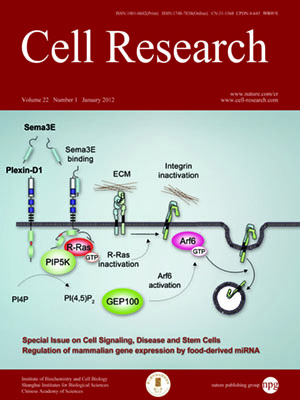
Volume 22, No 1, Jan 2012
ISSN: 1001-0602
EISSN: 1748-7838 2018
impact factor 17.848*
(Clarivate Analytics, 2019)
Volume 22 Issue 1, January 2012: 62-77
REVIEWS
Modeling sarcomagenesis using multipotent mesenchymal stem cells
Rene Rodriguez, Ruth Rubio and Pablo Menendez
Stem Cells, Development & Cancer Laboratory, Pfizer � University of Granada � Andalusian Government Centre for Genomics and Oncological Research (GENyO), Parque Tecnológico de Ciencias de la Salud, Avda de la Ilustración 14, Granada, 18007, Granada, Spain
Correspondence: Pablo Menendez, Rene Rodriguez,(pablo.menendez@genyo.es; rene.rodriguez@genyo.es)
Because of their unique properties, multipotent mesenchymal stem cells (MSCs) represent one of the most promising adult stem cells being used worldwide in a wide array of clinical applications. Overall, compelling evidence supports the long-term safety of ex vivo expanded human MSCs, which do not seem to transform spontaneously. However, experimental data reveal a link between MSCs and cancer, and MSCs have been reported to inhibit or promote tumor growth depending on yet undefined conditions. Interestingly, solid evidence based on transgenic mice and genetic intervention of MSCs has placed these cells as the most likely cell of origin for certain sarcomas. This research area is being increasingly explored to develop accurate MSC-based models of sarcomagenesis, which will be undoubtedly valuable in providing a better understanding about the etiology and pathogenesis of mesenchymal cancer, eventually leading to the development of more specific therapies directed against the sarcoma-initiating cell. Unfortunately, still little is known about the mechanisms underlying MSC transformation and further studies are required to develop bona fide sarcoma models based on human MSCs. Here, we comprehensively review the existing MSC-based models of sarcoma and discuss the most common mechanisms leading to tumoral transformation of MSCs and sarcomagenesis.
Cell Research (2012) 22:62-77. doi:10.1038/cr.2011.157; published online 20 September 2011
FULL TEXT | PDF
Browse 2202


